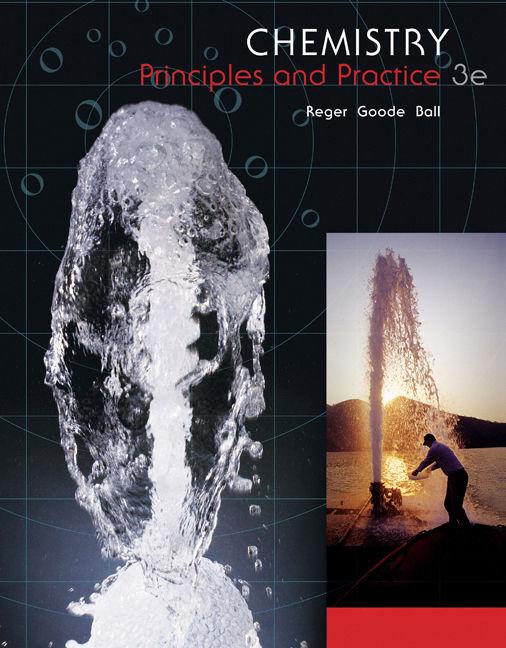Phosphorus trichloride reacts with oxygen to yield POCl 3 . In an experiment performed in the laboratory,
Question:
Phosphorus trichloride reacts with oxygen to yield POCl3. In an experiment performed in the laboratory, 11.0 g PCl3 and 1.34 g O2 are mixed, and 11.2 g POCl3 is isolated. What is the percent yield?
Strategy
To determine the percent yield, we must calculate the theoretical yield based on the limiting reactant. The strategy for calculating the theoretical yield is the same as in Example 3.19. Use this calculated theoretical yield and the actual yield given in the problem to calculate the percent yield.
Example 3.19
A reaction is conducted with 20.0 g H2 and 99.8 g O2.
(a) State the limiting reactant.
(b) Calculate the mass, in grams, of H2O that can be produced from this reaction.
Strategy
We use the same four-step procedure outlined in Section 3.4, but we must calculate the quantities of product that could form from each of the reactants to determine the limiting reactant. The limiting reactant is the one that yields the smallest amount of product.
4 Step procedure In Section 3.4
1. Write the balanced chemical equation.
2. Start with the (given) mass of one substance and calculate the number of moles of this substance, using the appropriate mass–mole conversion factor.
3. Use the coefficients of the balanced equation to calculate the moles of the desired substance from the moles of the given substance.
4. Calculate the mass of the desired substance, using the appropriate mole–mass conversion factor.
Step by Step Answer:

Chemistry Principles And Practice
ISBN: 9780534420123
3rd Edition
Authors: Daniel L. Reger, Scott R. Goode, David W. Ball





